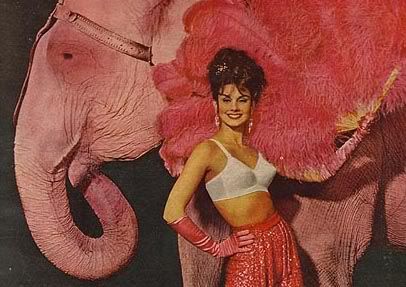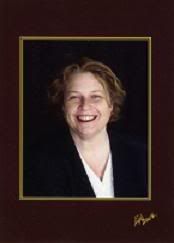On this blog I intend to use quite a bit of information from other sources. I think it important to give attribution, and the following conventions are designed to credit to the original author(s).
With that in mind:
Basic text for the posts will be in white. In the main body of the text, if you see something in white,
in quotes, assume it was not written by me. It will be followed by a dash and an abbreviation for the original source of the material. I may put some common abbreviations used on the sidebar, but for full details of the source see the bottom of this post..
Any commentary text I add, will not be quoted, but will follow after a line break, followed by a series of dashes.
Sometimes, particularly when quoting the St. Mary's missal I have, information will have changed since 1948, when the book was published - such things as percentage of Catholics in a given US state, or population figures, etc. These emmendations will be given in bright blue type font, placed between curly brackets.
Example:
"St Froddo was born in hard time Mississsippi, surrounded by 4 walls that weren't so pretty, his parents gave him bon-bons, and a unicycle in 1912
{1914}. Blah, blah. -- BS"
---
Heaven knows why this guy was made a Saint
--
Ergo the business about Froddo was a quote from "Bull Stuff " and you can look up the particulars on the source "Bull Stuff" here in detail, or on the sidebar for a short reference. The "heaven knows" comment was something I made up.
Links will be in yellow. Abbreviations for sources will be in red, there will be a short reference to the abbreviation in the sidebar--full details of the publication or source will be at the bottom of this post.
If for some reason, I get a hankering to add a link that also plays music, I will put a musical note or two behind the link, as a "Fair warning" that if you're goofing off at work, or whatever, reading this blog, the link you click to will play some music. A word to the wise.
Also on the side bar, will be some useful links which bring up frequentlly mentioned information - for instance, a list of popes, etc. it may be an external link to another site (duh), or if need be, it may link to a scribd page I've created. [Don't have any up yet, but keep an eye out for them.]
Where census figures and the like are updated, the most likely source will be The Catholic Almanac, or official US Census figures. If a different source is used, I'll so note with a hyphen and an Abbriviation as to source.
Watch my tags, I will try and be consistent. For instance, if there is a lovely series in the St. Mary's missal regards the history of the spread of Catholicism in each state I will try to put not only the name of the state in the tags section, but also the word "states."
Also, as regards to writing up the info. about the states -- for right now, I will not be doing them in alphabetical order. In part, because two states have been added to the Union since '48, namely Alaska and Hawaii, and I'm going to need some time to gather info on those states. I will try and do one state a week, usually in the order the state was admitted to the Union. [If there's a BIG bribe in the offing, however....]
If you're going to drop me a line privately, feel free, HOWEVER, give me a heads up in an online comment -- I generally don't check the email this blog is officially linked to. So, no, I'm not standoffish - it's just that you may be waiting for a MONTH (or more!) sometimes, before I'd see your email -- then you'd think I hated your guts or was ignoring you. You can write me there, of course, but do give me a heads up -- even if you don't have anything to say about that item.
It occurs to me that I am HOURS, and HOURS time zone wise behind most of you -- so I will try to get items that pertain to a given day or days a little ahead of time when applicable, but don't hold my feet to the fire over it. Capisce? Other wise I send out my half-Sicilian Godfather, Uncle Rollie. He's pushing 80, but he can still probably beat the crap out of you because he's a Frozen Chosin.
Abbreviations and their full attributions: (this list will likely expand over time)
-----------------------------------------
B.P.M. - Refers to the Latin Mass '62 edition recently published by Baronius Press. If they hadn't have been so lame, in some respects, I wouldn't have started this blog. (Well, okay, I had "other resources" to compare them with.)
C.E.N.A. - Catholic Encyclopedia, which is on the New-Advent Website. This reference will probably be used fairly frequently in links.
C.H. - Laux, Fr. John, - Church History (a history of the Catholic Church until 1940) -- originally published in 1930, with periodic emmendations -- Good for "upper high school * College Courses and Adult Reading." recently republished by TAN books. -- I would have loved this book in High School and after. In my day, in the 70s a lot of the religious education courses available were pretty Mickey Mouse (no offense to the Mouse!). [The only challenging class I had for religion was a basic philosophy class I took when I was 16, all the other classes were pretty much an easy "A" unless you were a complete moron, or "B" at worst. You'd have had to cut class to smoke ciggies if you got a "C" or less.
J. - The Mass of the Roman (Its origins and development), by Joseph Jungmann, 2 Vols. Originally published in the 50s, reissued by Collegeville press. I expect this resource will be invaluable for background articles. Jungmann was a master at being thorough, I'm not one for "allegorical" explanations as the main mover and shaker. [Allegorical is fine as an extra layer on type of everything, but it's usually something embroidered after the fact.
M.R.25 - Refers to my beautiful Missale Romanum, published in 1925. It's a beautiful little hand missal, 99% in Latin, designed for priest/seminarian. Quite useful for spotting changes to the calendar, or ritual over the course of the 20th century, when used to compare with other missals.
PEL - A Primer of Ecclesiastical Latin, by John E. Collins
S.M. - St. Mary My Everyday Missal and Heritage. - (1948), issued by the Monks of St. Mary's Abbey, Newark, NJ, Rt. Rev. Patrick O'Brien, OSB, Abbot - published by Benzinger Bros.

